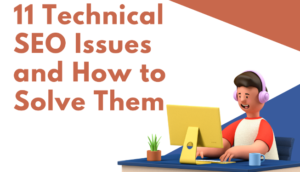Do you ever wonder why your blog isn’t achieving the goals you set out to achieve? Why your bounce rate is high, and your content isn’t shared? I will be brutally honest with you. Your blog posts are average.
A blog visitor will scheme through your text before reading it; if they detect mediocrity, they’ll leave within 20 seconds.
The competition to attract and retain readers in every niche is brutal. Businesses are heavily investing in their blog posts to establish themselves as an industry thought leaders, drive sales, and wade off competitors.
So, how do you create an amazing blog post that will help you rank higher and establish you as an expert voice in your niche? We have created these five simple steps you can use to turn your blog posts from average.
Step 1: Strategize
The first step to writing a blog post is developing a strategy to guide you. A solid strategy will help you:
Define Your Audience: Knowing who you are writing for will direct you in developing valuable blog posts tailored to them. You need to create blog posts that appeal to your audience, not you. Use Google Ads Audience Insight to get data that will tell you what your audience is reading. The tool will help you define your audience using their demographics (age, gender, education level, etc.).
Know the User Intent: You must create content to help users achieve their goals. You do this by knowing what your blog reader will be looking for and what action they will take. Are they looking for information or looking to make a purchase. Depending on the users’ intent, craft a blog that will solicit the proper reaction from them. The reaction can be to subscribe to your newsletter or buy your product.
Research Thoroughly: Running your blog idea through search engines is the first step of researching. You can find stats, data from authoritative sources, and quotes from niche experts.
Look at what your competitors are doing. Find their weakness and create a roadmap of how to capitalize on it. Researching competitors will also help you determine what’s missing from the discourse.
The research you gather will guide you in developing an outline for your blog and deciding the format to use.
Use Keyword research tools like Semrush to create potential terms you can target on your blog. This tool will give you deep insights into the search volume and competitiveness of the keywords and suggest long-tail keywords you can incorporate into your blog post.
Fact Check: Verify all your collected information and ensure they’re up-to-date. Wrong information can kill your blog’s reputation.
Step 2: Craft a Compelling Headline
The headline is the first thing your reader will see. It doesn’t matter how excellent your blog post is if the headline can’t entice someone to click. Search engines pay extra attention to headlines; if you go with an average one, your chances of making it to the SERPs dwindle.
A great heading should be able to tell the reader what the blog post is about and how beneficial it will be to them. These are the characteristics your blog headline should have:
- Unique – Millions of content have probably been written about your blog idea. Craft a headline with the least competition to stand out from the masses.
- Promise – Make a promise to your potential reader. Tell them what knowledge they will gain by reading your article.
- Adjectives – Using exciting and emotional adjectives will increase your click rates. Compelling adjectives include fun, free, simple, meaningful, vital, etc. Emotional adjectives include; amazing, spectacular, surprising, fantastic, etc. Readers love to be reaffirmed and bombarded with positivity.
- Brief and Informative – You should make your headline as short as possible while making it helpful and informative.
- Address the Reader – The easiest way is to use second-person pronouns “you” and “your.” If this doesn’t fit, write in a tone that talks to the reader.
Step 3: Write an Irresistible Introduction
The first two or three paragraphs carry the significant weight of your blog post. Your reader will judge your entire blog post based on your introduction.
You must develop formulas to get the reader’s attention as quickly as possible. One tested and proven formula is starting your intro in a conversational tone. There are a couple of ways to do this:
- Ask Close-ended questions – The answer to your questions should be an astounding “yes.” Asking these questions will tell the reader you understand what they want. It comes off as friendly and inviting.
- Relate with the Reader – Your blog intro should make the reader feel more connected to you and your content. It shows your reader he isn’t alone and you have shared experience. One way of doing this is using plural third-person pronouns such as “we” to create commonality.
Another way is getting personal to relate to your reader—kick off the blog with a personal story. It makes the reader feel like they know you, which builds trust and encourages them to read the full text. Get creative and lead with a believable story.
- Start with a Quote or Fact: Using quotes and saying from authoritative people makes you trustable. If you can’t find a quote that is in line with your post, find an indisputable fact from a research published by a trustworthy source.
The intro gives you a chance to build rapport with your blog visitor. Once you achieve that, promise them your blog post will solve their problem.
Step 4: Deliver What You Promised
As a blogger, you want to create content that will help you achieve the goals you set for yourself. But to make your reader take any action after they have finished reading your article, you must first deliver what you promised. How do you that?
- Write helpful content – Make sure your blog addresses the user’s intent. Did the user come to learn how to solve a specific problem? They should leave satisfied.
- Get straight to the point – Avoid adding unnecessary information that adds no value to your blog post. Use bullet points and lists to make your content easy to follow. Write short sentences and paragraphs that are easily digestible.
- Check your tone – You should use a friendly, uniform tone in your blog posts. Your tone should help you craft articles that flow seemingly.
- Incorporate Media – Use images, infographics, and embed videos in your blogs. Media are engaging and reinforce information.
- SEO Optimization – Ensure you employ all the best SEO practices to ensure your blog post rank higher on search engine result pages. Adding alt-text to your images, using keyword-rich subheadings, performing interlinking, and using anchor texts naturally are some excellent practices to keep in mind.
Close With A Bang
How you end, your blog post is as important as how you start it. And it deserves as much effort. A blog conclusion creates a lasting impression. It decides if your reader will be coming back to your blog or not. The conclusion will decide your reader’s action; will they take the action you guide them to?
What should your Conclusion Include?
Your conclusion should be brief and sweet. It would be best if you combined any of the following ways
- Highlight the critical taker ways – It is suitable for long blog posts as it gives summarized and condensed information to the reader.
- Provide your opinions and suggestions – Communicating your advice to the reader will ease their decision-making.
- Call to action – This refers to the action you want the reader to take and will primarily be determined by their buyer’s journey stage. For new readers, you should direct them to take easy actions like signing up for your email newsletter or getting a freebie like an ebook. For the audience ready to make a purchase, you can call on them to click the “buy button.”
Get to Work
Whether your end goal is generating more leads, increasing traffic and brand awareness, or gaining industry authority, creating amazing blog posts should be your top focus. It will differentiate you from competitors and help you achieve your goals.
Creating fantastic blog posts while running a business can sometimes be tricky. You should consider outsourcing your blog posts and concentrate on matters.





